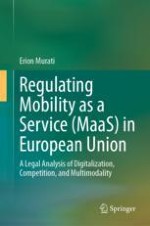2023 | OriginalPaper | Buchkapitel
4. Establishing a Three-Dimensional MaaS Data Sharing Governance
verfasst von : Erion Murati
Erschienen in: Regulating Mobility as a Service (MaaS) in European Union
Verlag: Springer Nature Switzerland
Aktivieren Sie unsere intelligente Suche, um passende Fachinhalte oder Patente zu finden.
Wählen Sie Textabschnitte aus um mit Künstlicher Intelligenz passenden Patente zu finden. powered by
Markieren Sie Textabschnitte, um KI-gestützt weitere passende Inhalte zu finden. powered by
